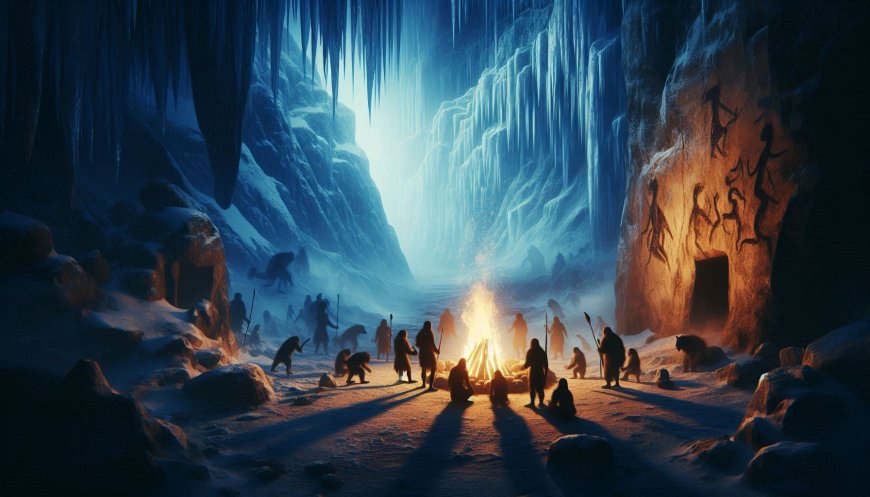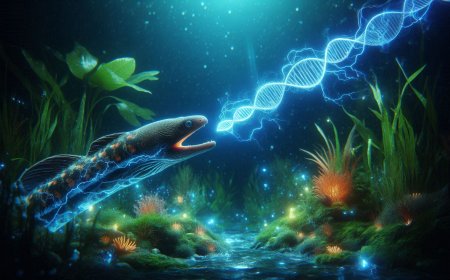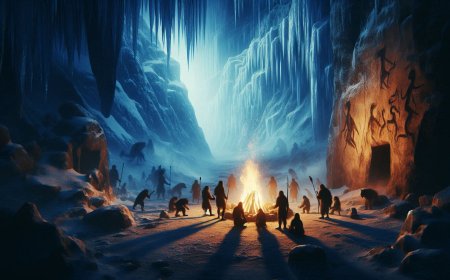Dancing Shadows: The Fire Art of the Ice Age
Explore the mesmerizing fire-lit cave art of the Ice Age, where ancient humans created stunning visuals of dancing shadows and primal art amidst icy landscapes. A captivating blend of survival, creativity, and mystery.

As the icy winds howled outside, a group of early humans huddled together around a crackling fire, not only for warmth and safety but for something far more profound. In the glow of the flickering flames, the shadows danced across the stone walls, and something magical began to happen. On the rough limestone plaquettes scattered around the hearth, the figures of animals—horses, ibex, reindeer—etched by their own hands, seemed to come alive. The Paleolithic world wasn’t just about surviving; it was about art, expression, and connection. And in this moment, fire art was born.
Long before the concept of cinema or animation, these Ice Age artists had already discovered a way to create the illusion of movement. Recent research by archaeologist Andy Needham and his team proposes a fascinating idea: that Paleolithic people intentionally used the dynamic light of fire to breathe life into their carvings. These 15,000-year-old limestone plaquettes, unearthed from the Montastruc rock shelter in southern France, are more than static works of art. When illuminated by the unpredictable light of a flickering fire, the animals etched onto their surfaces seem to move—running, leaping, even fleeing from predators.
The mystery of these ancient works deepens when we look at the evidence. The plaquettes, adorned with figures from the Magdalenian culture, bear signs of thermal damage. The telltale pinkish discoloration and heat fractures suggest that they were deliberately placed near fires. But was this simply accidental, a byproduct of living close to the flames, or was it intentional? Could the interplay between light, stone, and fire have been part of the creative process itself?
To explore this question, Needham’s team turned to experimental archaeology, recreating the stone carvings and exposing them to various fire scenarios. The results were astonishing. Under the flickering firelight, the carvings seemed to leap into motion, as though the ancient artists had crafted not just images but living scenes, capturing moments of life in a way that static art could not.
But how did these Paleolithic artists achieve such an effect? Part of the answer lies in a psychological phenomenon known as pareidolia—the human brain’s tendency to see familiar patterns, especially faces and animals, in random shapes. In the wavering firelight, the irregular and incomplete carvings on the plaquettes would transform, as the brain filled in the gaps, creating the illusion of motion. It was an early form of animation, an art born not only from the hand of the artist but from the collaboration between fire, stone, and the viewer’s imagination.
Imagine the scene: after a long day of hunting and gathering, the community would gather around the fire. The flames, casting their irregular light across the stones, would begin to play tricks on the eye. A horse, etched in rough lines, would suddenly seem to gallop. An ibex, barely discernible in the daylight, would appear to leap out of the shadows. This was not just a practical survival skill—it was a form of storytelling, a communal experience that brought people together in awe and wonder.
These fire-lit gatherings would have been moments of shared artistry, where the act of creation was as important as the art itself. It wasn’t just about the finished carving but about the process: the artist shaping the stone, the group watching in anticipation, the firelight completing the work in a way no hand ever could. In these moments, the Ice Age artists connected not just with each other but with something larger—the natural world, the spirits of the animals they depicted, and perhaps even with their ancestors.
The significance of this art goes beyond its visual impact. It was likely woven deeply into the fabric of their culture. The rituals of creation, the act of placing these stones near the fire, and even the destruction or discard of the plaquettes afterward, all suggest that art in the Ice Age was transient and ritualistic. These gatherings may have been moments of spiritual summoning, where the act of drawing the animals called upon their spirits or ensured good fortune in the hunt.
In the cold, harsh reality of Ice Age life, fire wasn’t just a tool for survival—it was a canvas. The flames didn’t just keep people warm; they ignited their imaginations, bringing art to life in ways we are only beginning to understand. These ancient artists didn’t just survive the Ice Age—they thrived, creating a world where art, culture, and community were illuminated by the ever-shifting light of the fire. The shadows that danced across their stone carvings were more than tricks of the light; they were the beating heart of a people whose creativity transcended time.
What's Your Reaction?






































































































